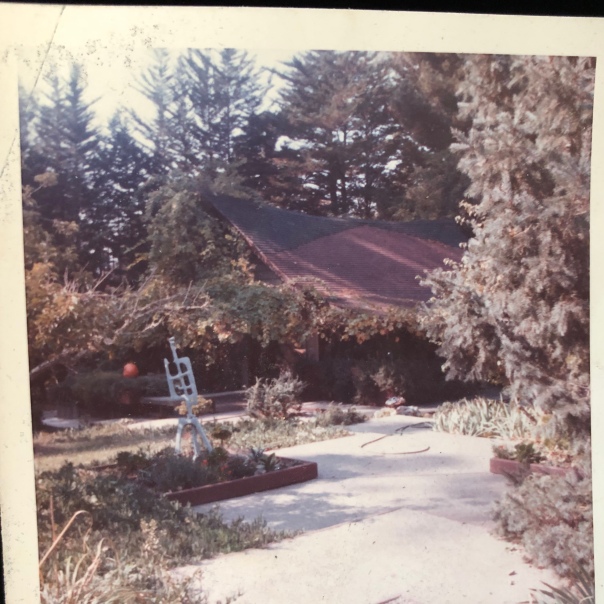It was late winter or early in the spring of 1954 when Elsa Gidlow and her partner Isabelle Quallo ran into Roger Somers and his toddler son Tagore at a picnic in Berkeley, CA. This was not a first meeting, as at least Elsa, and perhaps Isabelle too had previously encountered Roger and wife Mary Somers at one of Alan Watts’ popular classes at the American Institute of Asian Studies in San Francisco.
The chance meeting in Berkeley marked a turning point in all of their lives. Their conversation turned to finding a more secluded off-the-beaten track place to live. Roger said he knew of such a place. A few days later Roger and Mary visited Elsa and Isabelle at their home in Fairfax, Marin County, CA and described a 5 acre homestead outside nearby Mill Valley with two small houses and several out buildings in an isolated setting.
Soon a visit was paid to that property, the place that Elsa would come to name Druid Heights based on her friendship with UC Berkeley Celtic Studies Professor Ella Young and her appreciation of the novel Wuthering Heights. It was early spring and Elsa in her autobiography relates that the long road in was still muddy from winter’s rains. But after that visit she decided to take a gamble and partner on the property with a young couple she hardly knew.

A photo of the 1926 Haapa Family house quite possibly taken during that first visit in 1954 by the soon to be partners. Note the 1940s car and the puddles.
Roger had the construction skills to renovate the buildings but he and Mary lacked a down payment. They wanted a partner who could supply that. After deciding to take the plunge Elsa went to the bank to take out a mortgage on her Fairfax home to supply the down payment.
She was turned down. It was 1954 and she was an unmarried woman whose income came from her work as a freelance journalist. A few days later she found herself describing her difficulty in securing a loan to a friend, the right friend. Dorothy Erskine assisted her in getting around the road block set up by the bank by giving her a private loan from her own funds. Later in life Elsa was to do the same for others.
What a change the next 14 years brought about. By 1968 the forlorn landscape and buildings of 1954 had been transformed. Roger had done extensive such work on the buildings, so much so on the former Haapa farmhouse as to make it nearly unrecognizable outside and even more so in. Gardens begun by the the Haapa family had been greatly expanded. The Stiles Family had joined the community and Ed Stiles had built what was in ’68 known as The Casa Rondo, and later, after the arrival of Alan and Jano Watts the Mandala House.

The former Haapa family home, later aka the Dragon House, the Twin Peaks House, or as it was often called at the time of this photo, 1968, The Big House. But while the high peaked roof projects a sense of big as well as some drama with the roof’s shingle pattern, the actual building foot print is approximately 1000 square feet
By 1979 the last major structure to be erected at Druid Heights, Ed Stiles’ woodworking shop, was finished. Also added during the years between ’68 and ’79 were the circular library built for Alan Watts, the Meditation Hut adjacent to Elsa Gidlow’s house and the guest house adjacent to the Old Chicken Barn aka the Stiles’ house. Each of these buildings typifies different aspects of the unique culture of the era that Druid Heights was both a part of and helped give birth to.

Ed Stiles’ wood working shop as from the west circa 2010. From a National Park Service report.

The Library when last occupied in 2003 from a National Park Service report

The north side of the Meditation Hut near Elsa Gidlow’s house. From a National Park Service report.

The Stiles’ guest house from the north. From a National Park Service report.